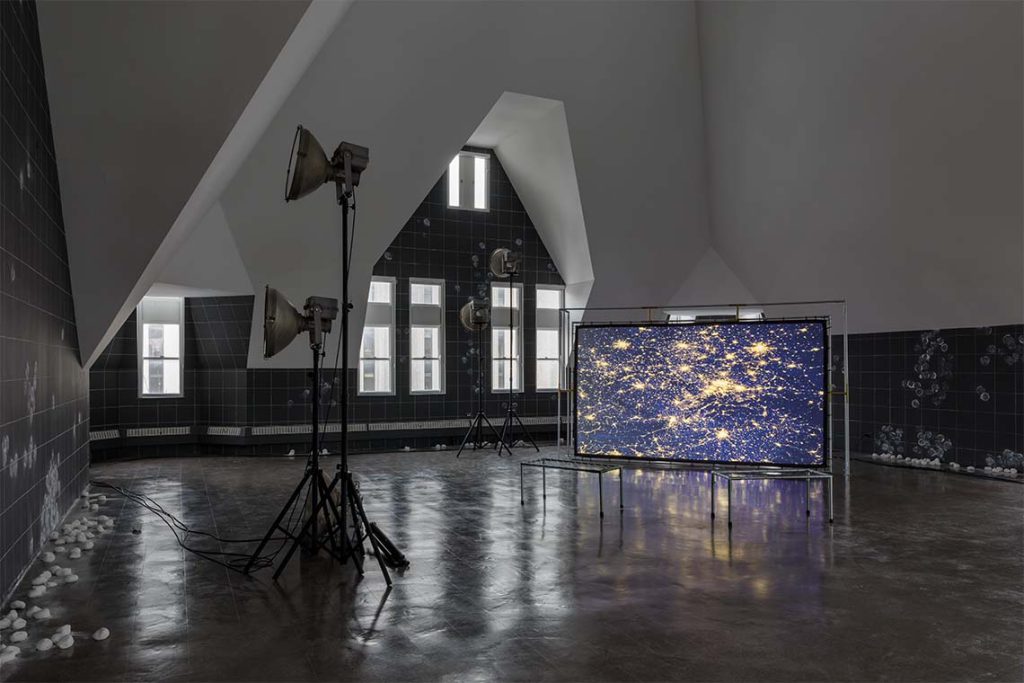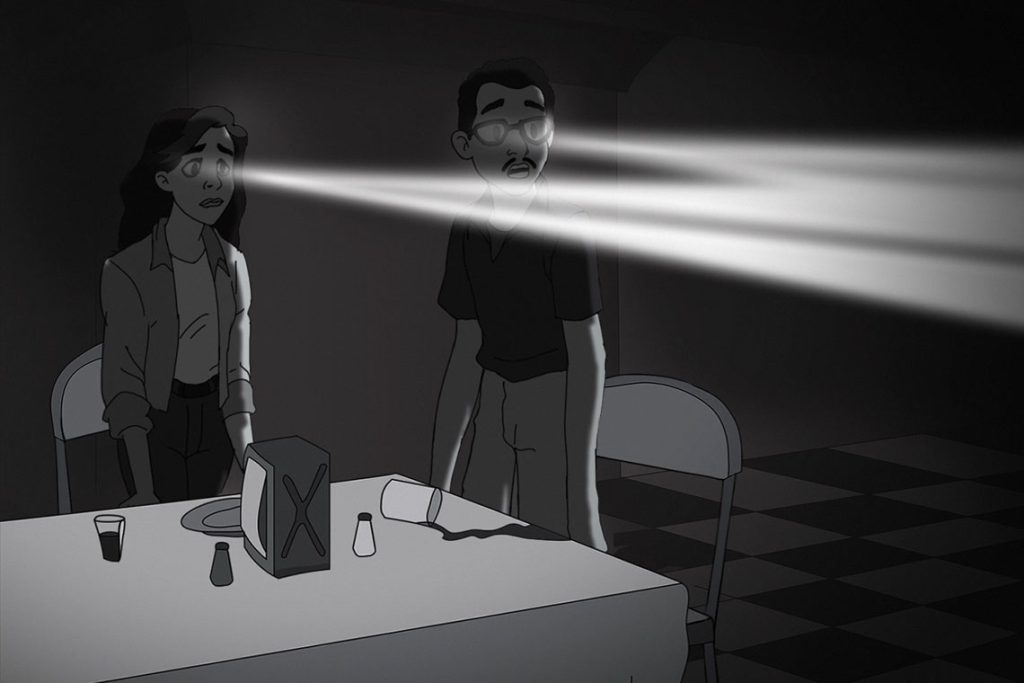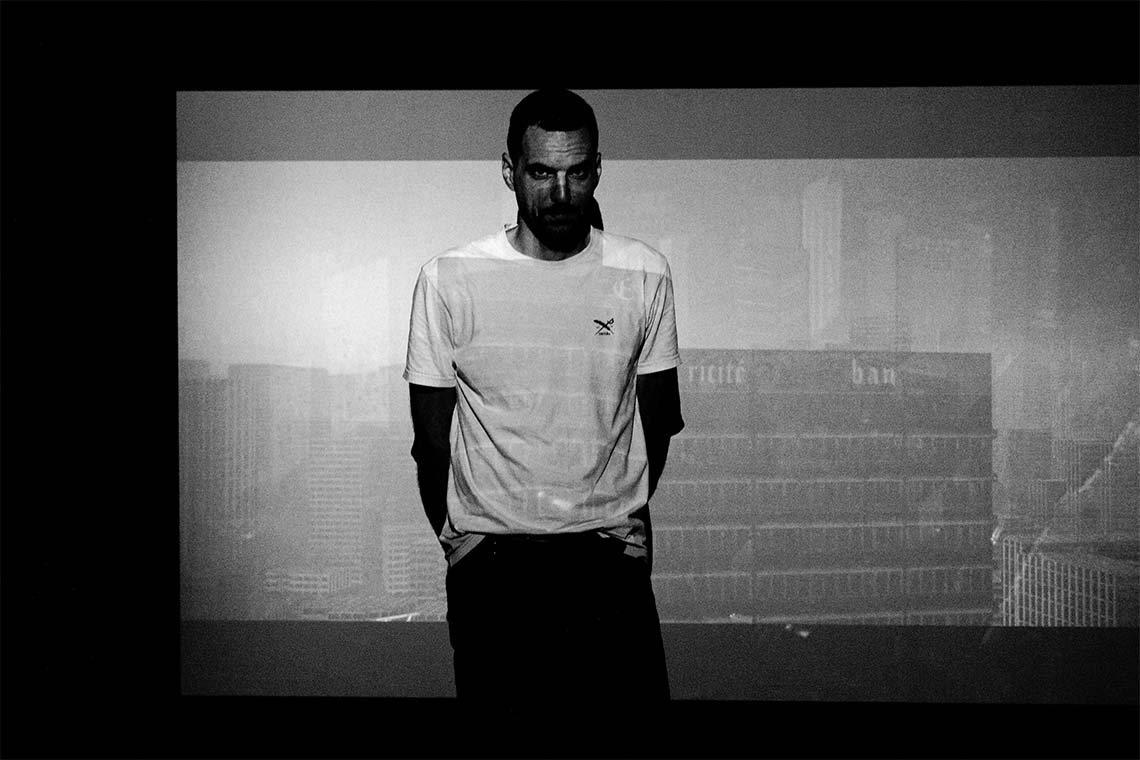The Beirut artist searches for new sources of light to guide his artistic path.
Haig Aivazian’s expansive adoption of light in his multidisciplinary practice stemmed indeed from an interest in light’s withdrawal in many forms, as well as its systematic lack in certain situations. “I started reading about the history of blackouts, particularly in the context of France’s colonial past,” he tells Canvas. The Lebanese artist is referring particularly to the 1961 Paris curfews that targeted Algerians and led to the murder by policemen of around 100 protestors, but he has also realised over the years that “public lighting was developed by the police as an early form of mass surveillance”.
The ambiguous relationship that modern society has built with light permeates into Aivazian’s diverse body of work. The malleable forms of illumination help him maintain a broad material spectrum that ranges from drawings to animation, as well as encompassing sculpture, performance and installation. Weaving allusive aesthetic drives with critical outlooks at power dynamics and their reflections on pop culture, he delivers absorbing visual statements. Whether embodied in brass and ceramic in his sculptural Rome is not in Rome (Pt.II Mythology to Abattoirs)installation (2019) at SFMOMA, or illustrated as a cartoon in his animation You May Own the Lanterns, but We Have the Light (2022), symbolic and tactile qualities of luminescence flicker.
At Chicago’s Renaissance Society in 2021, the artist presented All of The Lights, a moody installation of freestanding floodlights, sculptures which moonlit as film projection surfaces, and wall drawings. The show at the Windy City’s established non-profit venue allowed Aivazian to revisit existing work in film, along with a new commission. Titled All of Your Stars Are but Dust on My Shoes, the debut work meanders between sequences and stills from the artist’s own iPhone storage, orchestrated into an edit that traverses between various forms of light throughout humanity’s evolution, from gas lanterns and oil lamps to LED bulbs. The adjacent video, 2019’s Prometheus, assumes the Greek myth’s symbolisation of fire as knowledge through a video collage of images from the USA’s attack on Iraq and the gold medal-winning USA men’s Olympic basketball team, both from the early 1990s. The intertwined narratives of glory and loss, as well as facts and lies, are interjected by various images of fire.

Aivazian considers sports “a form of soft power which puts on a very visible platform for extremely marginalized people”. As a sculptor and a former basketball player, he is fascinated about what sport does to the body as a “highly geometric terrain where various permutations of movements are possible”. The use of military technology to capture most sport events nowadays is a main reason of interest: “Different corporeal realms have been muddled and condensed into a laboratory of our existence.” How Great You Are, O Son of the Desert! (2013) is a 26-minute video essay which dissects Zinedine Zidane’s infamous headbutt at the Italian player Marco Materazzi during 2006 World Cup final over an alleged racial slur against the French Algerian football star. “Sport presents a delineated platform for issues that we grapple with in society at large,” Aivazian points out, “but in ways that are maybe easier to identify with.”
In the presentation of moving images, however, a spatial consciousness is crucial for him. “My background is in sculpture and installation, which are practices primarily concerned with space and how the body moves around,” he says. By considering “multiple lives” for each of his videos, he can smoothly hone in on translating them to various forms of architecture with “an updated rhythm for each visitor.” As an artist who has exhibited in diverse geographies and social contexts, the historical layers of each locale often prompt his experiential decisions. In the case of Chicago, for example, the city’s tangled trajectory of social justice was a fitting trigger. He applied blown-up images of “heat maps”, which are bird’s-eye view graphics used by the police to predict and locate potential crime occurrences. Aivazian treated the venue’s walls with powders used by athletes (to obtain better grip or purchase on equipment) in visuals that replicate such optic networks on the Chicago map.
Aivazian’s interest in observing the psychologies behind power structures overlaps with a similar allure in any light source. “The most effective forms of power are first and foremost seductive,” he observes. “I am interested in this ambivalence between charm and damage.” The moth-to-flame effect has been witnessed in the initial strategies of recruitment by many authorities and agents, ensued by drastic control mechanisms on those once-promised attractions. Living in Beirut for a decade after studying and residing in the USA, Aivazian has experienced at first hand how “power can be exercised through the administration and withdrawal of light”. The declining infrastructure in the city, due to governmental failures and the effects of the 2020 blast, has resulted in perpetual power cuts. This landscape of scarcity prompts the artist to examine the differences between how various socio-political structures utilise brightness. “Neoliberal cities adopt excessive illumination and data as part of a cybernetic organisation where all your devices are synced and active,” he explains, pointing out the contrast to his own and many others’ reality. “The interest for me is to map out two opposite models – one in which everything is frictionless, and the other with tensions and holes – and figure out a visual register that can take into account their contradictions.

The surrounding plethora of contexts, both tangible and ideological, is Aivazian’s entire resource. “In a sense, all my work is found material,” he admits. For Rome is not in Rome (2016), fragments of existing monuments and design elements were transformed into “monstrous embodiments” for which he worked with craftspeople in Marrakech; in At every sunset, I think of you… (2013), charcoal was his choice of medium to draw mammoth stadium lighting structures in a series inspired by private companies supplying security infrastructure for the Olympic Games in London as well as lighting equipment for detention camps and prisons.
Aivazian particularly thrives in re-configuring existing bodies of work “to create new dialogues depending on where the work is being re-staged.” Delving into the selection of various sources – whether it is a Rihanna song or a video of the sun on his smart phone – grants him the liberty to jump between different registers and modes. “Promiscuity of images,” he calls the abundance of visual data occupying our consciousness, noting the reality of how “we recognise images not just for what they depict but also for how they are made, with what technology and with what purpose.” The impossibility of just simply looking at an image today is a stimulus for an artist committed to the investigation of the ways in which ideologies and culture feed one another. Aivazian admits approaching images with “alertness and a form of paranoia and forensic suspicion,” although sometimes he goes down into “a YouTube rabbit hole – so there is a mindless drift as well as high consciousness.”
Extensive hours spent in front of a screen leads to a particular association with a studio life operated by Aivazian from his home in Beirut. “My time here is mostly for reading, meetings and watching a very clean desk,” he says about his unconventionally tidy workspace. Samples and mockups occasionally occupy his desk, but for production he works largely with manufacturers from different parts of the world. At the studio, Aivazian recently finished editing You May Own the Lanterns, but We Have the Light (Pt.I Home Alone) (2022), the first 12-minute episode of an ongoing multi-part black-and-white cartoon series. Collective ways of producing the cartoon and its research aspect also constitute the subject of his new PhD study at Leiden University in the Netherlands. Also on the horizon are new territories to explore light or its absence. “Light is the mechanisation of vision,” he says, “which has currently led me to also think about its absence in darkness, meaning the nighttime, and what this entails in terms of libido and desire.”
This profile first appeared in Canvas 110: It’s Electrifying



